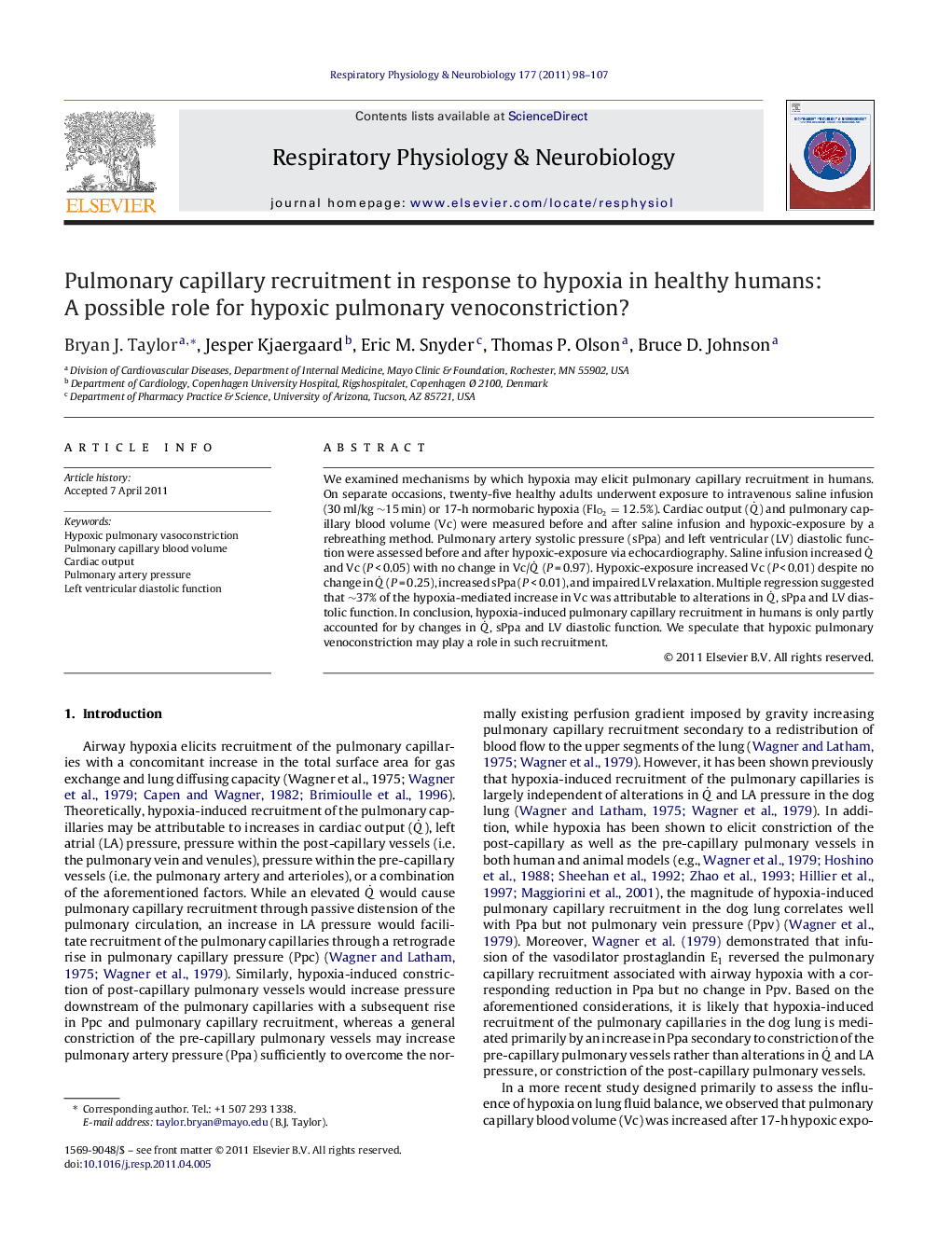| Article ID | Journal | Published Year | Pages | File Type |
|---|---|---|---|---|
| 5926520 | Respiratory Physiology & Neurobiology | 2011 | 10 Pages |
Abstract
We examined mechanisms by which hypoxia may elicit pulmonary capillary recruitment in humans. On separate occasions, twenty-five healthy adults underwent exposure to intravenous saline infusion (30Â ml/kg â¼15Â min) or 17-h normobaric hypoxia (FIO2=12.5%). Cardiac output (QË) and pulmonary capillary blood volume (Vc) were measured before and after saline infusion and hypoxic-exposure by a rebreathing method. Pulmonary artery systolic pressure (sPpa) and left ventricular (LV) diastolic function were assessed before and after hypoxic-exposure via echocardiography. Saline infusion increased QË and Vc (PÂ <Â 0.05) with no change in Vc/QË (PÂ =Â 0.97). Hypoxic-exposure increased Vc (PÂ <Â 0.01) despite no change in QË (PÂ =Â 0.25), increased sPpa (PÂ <Â 0.01), and impaired LV relaxation. Multiple regression suggested that â¼37% of the hypoxia-mediated increase in Vc was attributable to alterations in QË, sPpa and LV diastolic function. In conclusion, hypoxia-induced pulmonary capillary recruitment in humans is only partly accounted for by changes in QË, sPpa and LV diastolic function. We speculate that hypoxic pulmonary venoconstriction may play a role in such recruitment.
Keywords
Related Topics
Life Sciences
Biochemistry, Genetics and Molecular Biology
Physiology
Authors
Bryan J. Taylor, Jesper Kjaergaard, Eric M. Snyder, Thomas P. Olson, Bruce D. Johnson,
